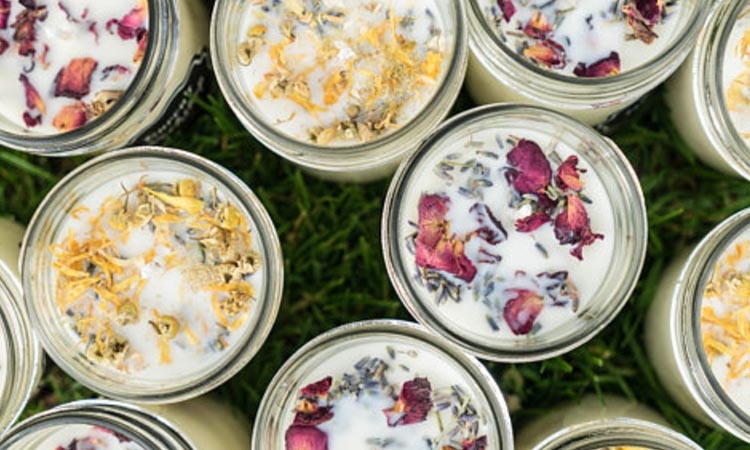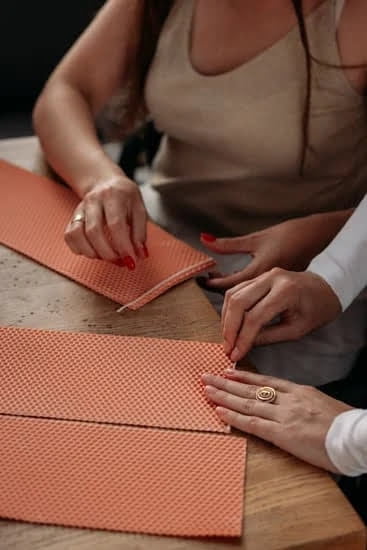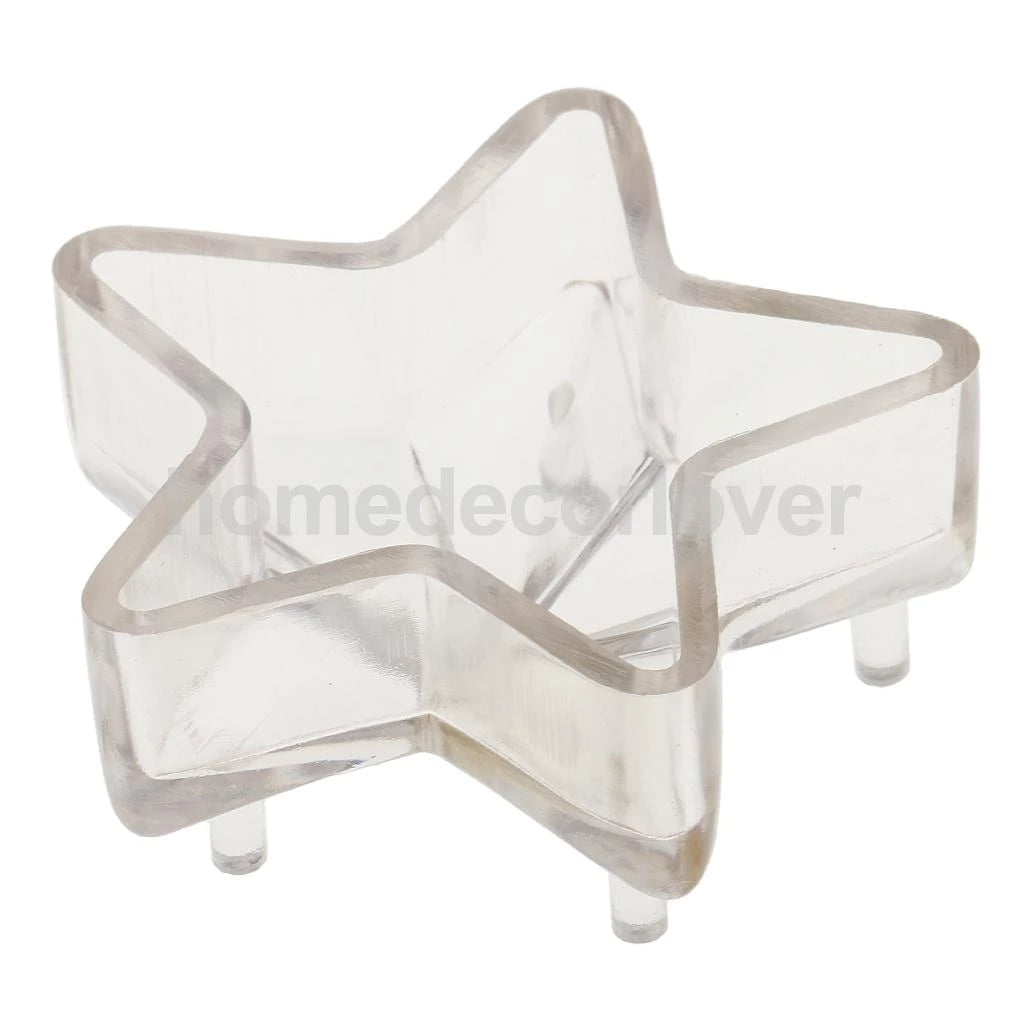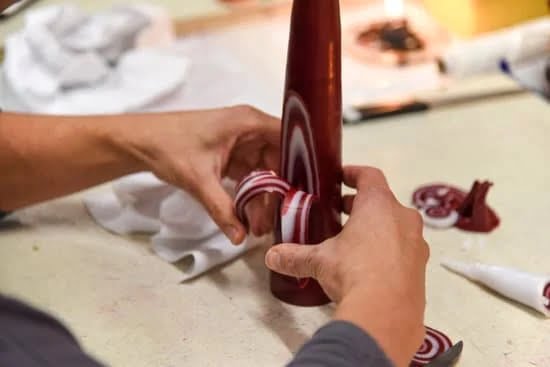Candle making, a craft that has been practiced for centuries, is an art form that allows individuals to express their creativity and create beautiful and fragrant pieces. In this introductory section, we will delve into the world of candle making, exploring its rich history and uncovering the secrets behind this fascinating craft.
Candle making has a long-standing tradition that dates back to ancient civilizations. As early as ancient Egypt and Rome, candles were used for practical purposes such as providing light in dark spaces. Over time, candle making evolved into a form of artistry, where individuals could create unique and personalized pieces.
Delving deeper into the art of candle making, it becomes apparent that there are scientific principles and chemistry involved in creating these illuminating masterpieces. Understanding the essential ingredients and their roles is crucial in achieving desired results. Furthermore, exploring the heating and cooling process involved in candle making as well as the chemical reactions that occur can help enthusiasts achieve optimal outcomes.
To embark on a successful candle-making venture, having the right tools and equipment is essential. This section will highlight the must-have gear necessary for crafting candles, from different types of molds and containers to safety equipment and precautions. By equipping oneself with the proper tools, aspiring candle makers can ensure a smooth and enjoyable experience.
The Science and Chemistry behind Candle Making
Candle making is not just a simple craft; it actually involves a fascinating blend of science and chemistry. Understanding the scientific aspects of candle making can greatly enhance your ability to create high-quality candles. In this section, we will delve into the essential ingredients, heating and cooling processes, and chemical reactions that occur during candle making.
One of the most important elements of candle making is the selection of ingredients. The three key components of a candle are wax, wick, and fragrance. Different types of wax have different melting points, burn rates, and characteristics. Some common types of wax used in candle making include soy, beeswax, and paraffin.
The heating and cooling process during candle making is crucial for achieving the desired results. When heat is applied to the wax, it melts and becomes a liquid state. As the melted wax cools down, it solidifies again and takes on its final shape as a candle. The rate at which the wax cools can affect factors like scent throw and burn time.
Chemical reactions also play a significant role in candle making. When a lit wick comes into contact with the liquid wax, it causes evaporation of some components in the wax along with combustion to produce heat and light. This chemical reaction is what allows candles to emit fragrance when scented oils are added to the wax.
Understanding these scientific aspects of candle making can help you make informed decisions about choosing ingredients, controlling heat and cooling processes, and achieving desired outcomes for your candles. Embrace the science behind this craft to elevate your candle-making skills to new heights.
The Tools and Equipment You Need for Candle Making
Candle making is a craft that requires specific tools and equipment to ensure successful results. Before starting your candle-making venture, it’s important to familiarize yourself with the necessary gear. This section will highlight the essential tools and equipment needed for candle making.
One of the must-have tools for candle making is a double boiler or a melting pot. This allows you to safely melt your wax without direct heat, preventing any potential hazards. Another essential tool is a thermometer, which helps you monitor the temperature of the wax during the melting process.
In addition to these basic tools, there are various other equipment options to consider. For instance, molds and containers are crucial for shaping your candles. Molds come in different shapes and materials such as silicone, metal, and plastic. Containers, on the other hand, can be jars or tins that hold the melted wax while it solidifies.
Safety equipment should also be prioritized when candle making. This includes items such as heat-resistant gloves to protect your hands from burns and spills, safety goggles to shield your eyes from splashes of hot wax or fragrance oils, and a fire extinguisher in case of emergencies.
| Tool/Equipment | Description |
|---|---|
| Double Boiler/Melting Pot | To safely melt wax without direct heat |
| Thermometer | To monitor temperature during melting process |
| Molds | To shape melted wax into desired forms |
| Containers | To hold melted wax while it solidifies |
| Safety Gloves | To protect hands from burns and spills |
| Safety Goggles | To shield eyes from splashes of hot wax or fragrance oils |
| Fire Extinguisher | In case of emergencies |
It’s important to have these tools and equipment readily available before you start your candle-making journey. The right gear will not only ensure a safe and successful process but also contribute to the overall quality of your candles.
Selecting the Perfect Wax for Your Candle
When it comes to candle making, selecting the right wax is crucial for achieving the desired results. There are several options available, each with its own unique qualities and characteristics. Let’s take a closer look at the different wax options and consider factors such as scent throw, burn time, and eco-friendliness.
- Soy Wax: Soy wax has gained popularity in recent years due to its natural origins and clean-burning properties. Derived from soybean oil, this wax burns slowly and evenly, resulting in a longer-lasting candle. It also has excellent scent throw, meaning it can effectively carry fragrance oils for a delightful aroma throughout the room. Additionally, soy wax is environmentally friendly as it is biodegradable and derived from renewable resources.
- Beeswax: Beeswax is another natural option that offers many benefits. Known for its sweet honey-like aroma, beeswax candles create a warm and inviting atmosphere. They have a long burn time and produce very little soot or smoke when properly maintained. Beeswax also has natural antibacterial properties and can help purify the air by releasing negative ions.
- Paraffin Wax: Paraffin wax is the most commonly used wax in commercial candle production due to its affordability and versatility. It has excellent scent throw and can hold fragrances well. Paraffin candles have a higher melting point than other waxes, resulting in a longer burn time. However, paraffin is derived from petroleum which makes it non-renewable and less eco-friendly compared to other options.
- Blends: Many candle makers choose to create custom blends by mixing different types of waxes to achieve specific characteristics or properties. For example, combining soy wax with beeswax can result in a longer-lasting candle with enhanced fragrance retention.
When selecting the perfect wax for your candle, consider your priorities in terms of burn time, scent throw, environmental impact, and budget. It’s also important to experiment and test different waxes to find the one that best suits your preferences and desired outcome. With the right wax, you can create candles that not only look beautiful but also provide a delightful sensory experience.
Essential Oils and Fragrance
The scent of a candle plays a vital role in creating the desired ambiance and mood. Essential oils are a popular choice for adding fragrance to candles due to their natural and therapeutic properties. When selecting essential oils for your candles, it is important to consider the quality, potency, and compatibility with different waxes.
Essential oils are derived from various plant sources and offer a wide range of scents, ranging from floral and herbal to fruity and woody. These natural extracts not only add a pleasant aroma to your candles but can also have therapeutic effects on mood and well-being. For example, lavender essential oil is known for its relaxing properties, while citrus oils like bergamot or lemongrass can create an uplifting atmosphere.
When using essential oils for candle making, it is crucial to choose high-quality oils that are specifically designed for aromatherapy or candle-making purposes. Cheap or synthetic fragrance oils may produce an artificial smell or cause issues during the burning process. Look for reputable suppliers that provide pure essential oils without any additives or dilutions.
Creating unique fragrance combinations is another exciting aspect of candle making. By blending different essential oils together, you can achieve custom scents and enhance the olfactory experience of your candles. Begin by experimenting with small amounts of each oil until you find the perfect blend. Keep notes on your creations so you can recreate successful combinations in the future.
It is important to note that some essential oils have lower flashpoints than others, meaning they have a lower temperature at which they produce flammable vapors. This can affect how hot the wax needs to be when adding the fragrance and may require special considerations during the manufacturing process. Always check the specific flashpoint recommendations for each oil you use.
Mastering the Art of Candle-Making Techniques
Candle making is an art that involves various techniques and methods to create beautiful and functional candles. Whether you are a beginner or have some experience in candle making, mastering the different techniques is essential to achieve the desired results. In this section, we will provide step-by-step instructions for beginners, explain different techniques like container candle making, pillar candle making, and taper candle making, and share troubleshooting tips and common mistakes to avoid.
Step-by-Step Instructions for Beginners
For those who are new to candle making, it is important to start with basic techniques to build a solid foundation. Here are some step-by-step instructions to get you started:
- Gather all the necessary materials and equipment: This includes wax, wicks, containers or molds, fragrance oils or essential oils if desired, a double boiler or microwave-safe container for melting wax, a thermometer, and a stirring utensil.
- Prepare your work area: Cover your workspace with newspapers or wax paper to protect it from any spills. Make sure you have good ventilation in the room.
- Melt the wax: Depending on the type of wax you are using, melt it using either a double boiler or microwave method. Follow the manufacturer’s instructions for the specific melting temperature.
- Add fragrance (optional): If you want scented candles, add fragrance oils or essential oils after melting the wax but before pouring it into containers or molds. Be sure to follow recommended fragrance load guidelines.
- Prepare your containers or molds: Place your wicks in the center of each container or mold and secure them in place using wick stickers or hot glue if needed.
- Pour the wax: Slowly pour the melted wax into each container or mold while holding the wick upright. Leave some space at the top (about ½ inch) as the wax may shrink slightly when it cools.
- Let it cool and cure: Allow the candles to cool and cure for several hours or overnight until they are completely solid and cooled.
Exploring Different Candle Making Techniques
Once you have mastered the basic techniques, you can start exploring different types of candle making. Here are a few popular techniques:
- Container candle making: This involves pouring melted wax directly into containers such as jars, tins, or teacups. It is a versatile technique that allows you to experiment with different container shapes and sizes.
- Pillar candle making: In this technique, candles are made without using any container. Instead, they are molded into pillar shapes using specialized molds or free-standing molds. Pillar candles can be vibrant centerpieces and come in various sizes and designs.
- Taper candle making: Taper candles are long, slender candles with a narrow base that gradually widens towards the top. They require tapered molds or hand-dipping techniques to achieve their shape.
Troubleshooting Tips and Common Mistakes to Avoid
Candle making is not without its challenges, but by being aware of some common mistakes, you can improve your skills and avoid potential pitfalls. Here are a few troubleshooting tips and common mistakes to keep in mind:
- Poor scent throw: If your scented candle doesn’t emit a strong fragrance when burned, it may be due to using an incorrect fragrance load or poor-quality fragrance oils. Experiment with different amounts of fragrance oil and consider investing in high-quality oils for better results.
- Uneven color distribution: Sometimes, the color distribution in your candles may appear uneven or streaky. To avoid this, make sure to thoroughly mix the dye into the melted wax before pouring it into molds or containers.
- Cracking or sinking candles: If your candles develop cracks or sink in the middle after cooling, it may be a sign of temperature fluctuations during the cooling process. To prevent this, ensure that the wax is cooled gradually and avoid exposing it to drafts or sudden temperature changes. Additionally, using a heat-resistant container can help minimize cracking.
By mastering these techniques, troubleshooting common issues, and avoiding mistakes, you can elevate your candle-making skills and create beautiful candles that will delight both yourself and others. Remember, practice makes perfect, so don’t be afraid to experiment and let your creativity shine through in your candle-making endeavors.
Creative Candle Making
Adding colors and designs to candles is one of the most exciting aspects of candle making. It allows for endless possibilities in creating unique and visually appealing candles that can be personalized to suit any occasion or aesthetic preference. In this section, we will explore various methods for adding color to your candles and discuss techniques for creating captivating designs.
Methods for Adding Color
There are several methods you can use to add color to your candles. One popular method is using liquid dyes or candle color blocks. These dyes are specifically formulated for candle making and come in a wide range of colors. Simply add a few drops of liquid dye or shave off a small piece of color block and mix it into the melted wax before pouring it into the mold or container.
Another option is using powdered pigments or mica powder. These can create stunning effects, such as metallic or shimmering finishes. To use powdered pigments, mix them with a small amount of melted wax until fully incorporated, then add the colored wax mixture back into the main batch.
You can also experiment with natural ingredients like herbs, spices, or flower petals to add color and texture to your candles. Simply infuse these natural materials in the melted wax before pouring.
Design Techniques
Once you have added color to your candles, it’s time to get creative with designs. Dip-dyeing is a popular technique where you dip one end of the candle into a different colored wax, creating an ombre effect. You can also try layering different colored waxes in a container candle by pouring each layer one at a time and allowing them to harden before adding another layer.
Marbling is another technique that creates beautiful patterns on the surface of candles. To achieve this effect, melt different colored waxes separately, then pour them into the container together while swirling gently with a skewer or toothpick.
If you’re feeling adventurous, you can try carving designs into pillar candles or creating shapes and patterns with silicone molds. The possibilities are endless when it comes to designing your candles.
Adding colors and designs to your candles not only enhances their appearance but also allows you to express your creativity and customize the look of your creations. Whether you opt for vibrant colors, subtle shades, intricate patterns, or simple designs, this is the stage where you can truly make your candles unique and visually appealing. So don’t be afraid to experiment and let your imagination run wild.
The Exciting World of Candle Making and Cooking
Cooking and candle making may seem like two completely different activities, but there is an exciting intersection between the two when it comes to mixing scents and flavors. Just as certain ingredients can be combined in cooking to create delicious flavors, candle makers can infuse their creations with food-inspired aromas that add another layer of sensory experience.
One way to incorporate the flavors of cooking into candle making is through the use of fragrance oils. Fragrance oils are specifically formulated to mimic various food scents, such as vanilla, cinnamon, coffee, or even specific fruits like apple or strawberry. These fragrances can be added to the melted wax during the candle-making process to give candles a truly delicious aroma.
Another way to infuse candles with food-inspired scents is through the use of essential oils. While essential oils are typically used for their therapeutic properties, many also have naturally occurring smells that resemble various foods. For example, peppermint essential oil can give your candles a refreshing minty aroma, while citrus essential oils like lemon or orange can provide a zesty and uplifting scent.
Creativity knows no bounds when it comes to combining scents in candle making. Just as chefs experiment with flavor combinations in cooking, candle makers can blend different fragrance oils and essential oils to create unique scent profiles. Some popular blends include vanilla and lavender for a calming effect, or citrus and herbaceous scents for a fresh and energizing experience.
| Aspect | Data |
|---|---|
| Fragrance oils | Mimic various food scents, such as vanilla, cinnamon, coffee, or specific fruits like apple or strawberry. Can be added to melted wax during the candle-making process. |
| Essential oils | Have naturally occurring smells resembling various foods. Can be used to infuse candles with food-inspired scents. For example, peppermint essential oil for a refreshing minty aroma or citrus essential oils like lemon or orange for a zesty and uplifting scent. |
| Creative blending | Combining fragrance oils and essential oils to create unique scent profiles. Popular blends include vanilla and lavender for a calming effect or citrus and herbaceous scents for a fresh and energizing experience. |
Conclusion
In conclusion, we have explored the world of candle making, delving into its history, science, techniques, and creativity. Throughout this journey, we have learned about the essential ingredients and tools needed for a successful candle-making venture and the various wax options available. We have also discovered the art of adding fragrance to candles using essential oils and discussed different techniques for creating visually appealing designs.
But now comes the question: is candle making cooking? While both activities involve creating something using heat and various ingredients, there are distinct differences between the two. Cooking primarily involves preparing food for consumption, whereas candle making focuses on crafting decorative items that emit fragrance when burned.
However, it is important to note that there is an intersection between candle making and cooking. The exciting world of infusing scents in candles with food-inspired aromas presents an opportunity to blend these two crafts. By incorporating scents like vanilla, cinnamon, or citrus into candles, you can create a cozy ambiance reminiscent of home-cooked meals or holiday baking.
Frequently Asked Questions
Is candle-making considered crafting?
Yes, candle-making is considered crafting. Crafting refers to the creation of decorative or useful items by hand, using various skills and techniques. Candle-making involves the artistic and skillful process of melting wax, adding fragrance and color, pouring it into molds or containers, and creating unique designs or shapes.
Crafters can use their creativity to make candles with different scents, colors, patterns, and even embed objects within them. Overall, candle-making combines artistic expression with manual dexterity and technical knowledge to produce handmade items.
What is the science behind candle-making?
The science behind candle-making revolves around the concept of combustion and the properties of wax as a fuel source. When you light a candle’s wick, the heat from the flame vaporizes the liquid wax near the wick’s tip. This vaporized wax combines with oxygen in the air to create heat, light, carbon dioxide gas (CO2), and water vapor through a chemical reaction called combustion.
The heat produced melts more solid wax near the wick’s base, drawing it up through capillary action so that it can continue fueling the flame. The type of wax used in candles affects their burning characteristics since different waxes have varying melting points and compositions.
Can you use candles to cook?
While candles can provide gentle heat when burned, they are not typically used for cooking purposes like stoves or other heat sources specifically designed for culinary applications. Most candles are made from paraffin or soy wax, which are not intended for cooking food directly.
Lighting a candle will generate a small amount of heat that could potentially warm certain types of food or beverages over time if placed nearby for an extended period. However, relying on candles as a primary cooking method would be impractical due to limited heat output and safety concerns associated with open flames indoors without proper ventilation or control mechanisms often found in professional cooktops

Welcome to my candle making blog! In this blog, I will be sharing my tips and tricks for making candles. I will also be sharing some of my favorite recipes.





